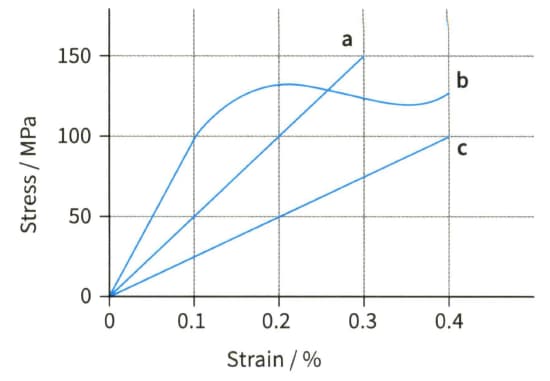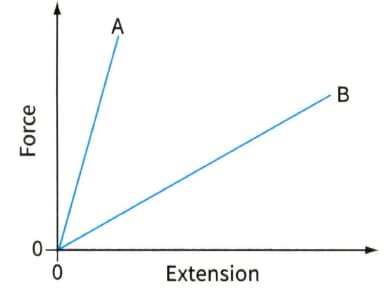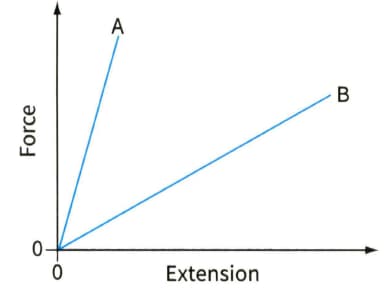Calculate the extension of a copper wire of length and diameter when a tensile force of is applied to the end of the wire. (Young modulus of copper )

Important Questions on Matter and Materials
In an experiment to measure the Young modulus of glass, a student draws out a glass rod to form a fibre in length. Using a travelling microscope, she estimates its diameter to be . Unfortunately, it proves impossible to obtain a series of readings for load and extension. The fibre snaps when a load of is hung on the end. The student judges that the fibre extended by no more than before it snapped. Use these values to obtain an estimate for the Young modulus of the glass used. Explain how the actual or accepted value for the Young modulus might differ from this estimate.
For each of the materials whose stress-strain graphs are shown in Figure, deduce the values of the Young modulus.

Stress-strain graphs for three materials.
Figure shows force-extension graphs for two materials. For each of the following questions, make the statement required. Also explain how you deduce your answer from the graphs.

Force-extension graph for two polymers.
(a) State which polymer has the greater stiffness.
Figure shows force-extension graphs for two materials. For each of the following questions, make the statement required. Also explain how you deduce your answer from the graphs.

Force-extension graph for two polymers.
(b) State which polymer requires the greater force to break it.
Figure shows force-extension graphs for two materials. For each of the following questions, make the statement required. Also explain how you deduce your answer from the graphs.

Force-extension graph for two polymers.
(c) State which polymer requires the greater amount of work to be done in order to break it.
